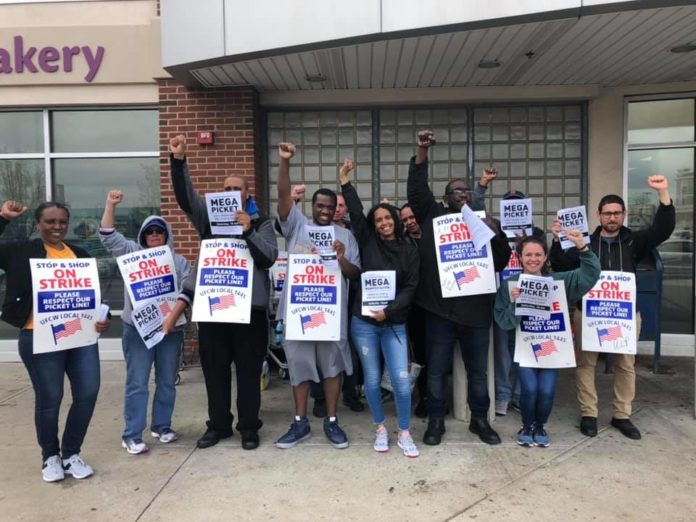The largest private sector strike in the U.S. in the past three years has ended. For eleven hard-fought days 31,000 Stop & Shop grocery-store workers across New England struck against company attacks on their wages and benefits. The tentative agreement, which will likely be ratified by all five New England United Food and Commercial Workers (UFCW) locals, is better than what workers would have gotten without striking, but there are many mixed feelings about the contract and the way the union leadership handled the strike and how it ended.
The strike succeeded in stopping the company’s threat to significantly raise health-care costs, something which corporations everywhere are trying to do to their workers. This sets a clear example for working people that attacks in this arena can be stopped with a bold fightback. But the contract also institutes a two-tier system of wages and pensions between part-time and full-time employees, and new hires and current employees. This has to be seen for what it is: an attempt by the company to divide the workforce and weaken the union for the next contract battle in three years. We must be clear that this cannot be allowed to happen.
Despite mixed feelings about the way things played out, this strike is being looked to by workers across the country as an inspiring example of workers fighting back against corporate greed. Workers at other companies would do well to follow Stop & Shop workers’ lead, so long as the lessons are learned. Over the course of the strike, Stop & Shop lost a whopping $100 million. Delis, bakeries, and customer service counters were closed. Stores began to smell as meat and dairy expired, and produce wilted. Put on full display for all to see was the simple truth: without workers, Stop & Shop is nothing.
Before the strike, Socialist Alternative carried an interview with a Stop & Shop worker, flyered outside stores in Boston, and held a community meeting in Worcester to build support for the workers in the event of a strike. During the strike, Socialist Alternative members in Boston, Worcester, Grafton, Amherst, and Holyoke in Massachusetts, as well as Providence, Rhode Island and Norwich, Connecticut were active on the picket lines at a number of stores.
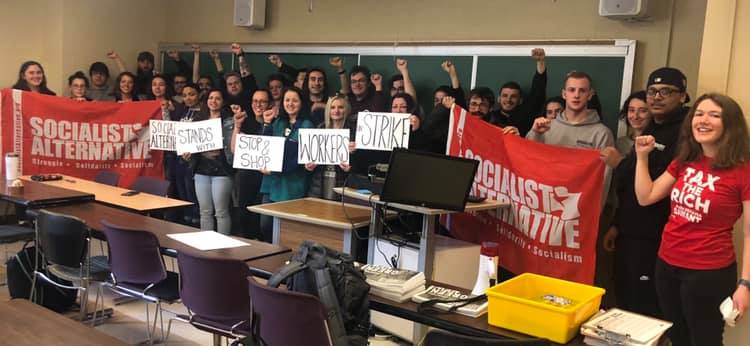
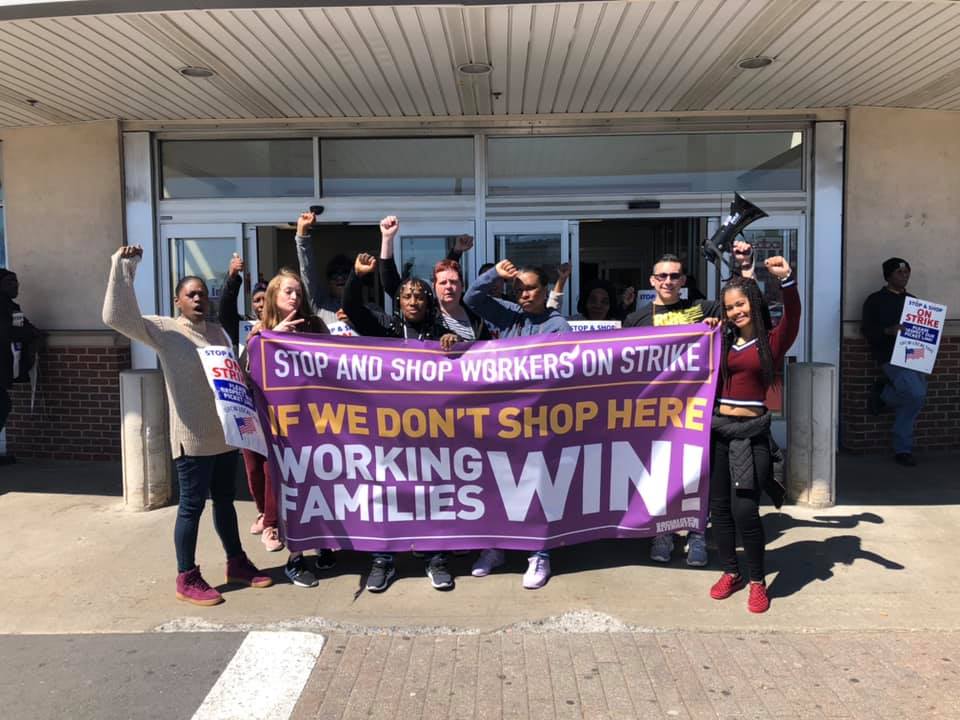
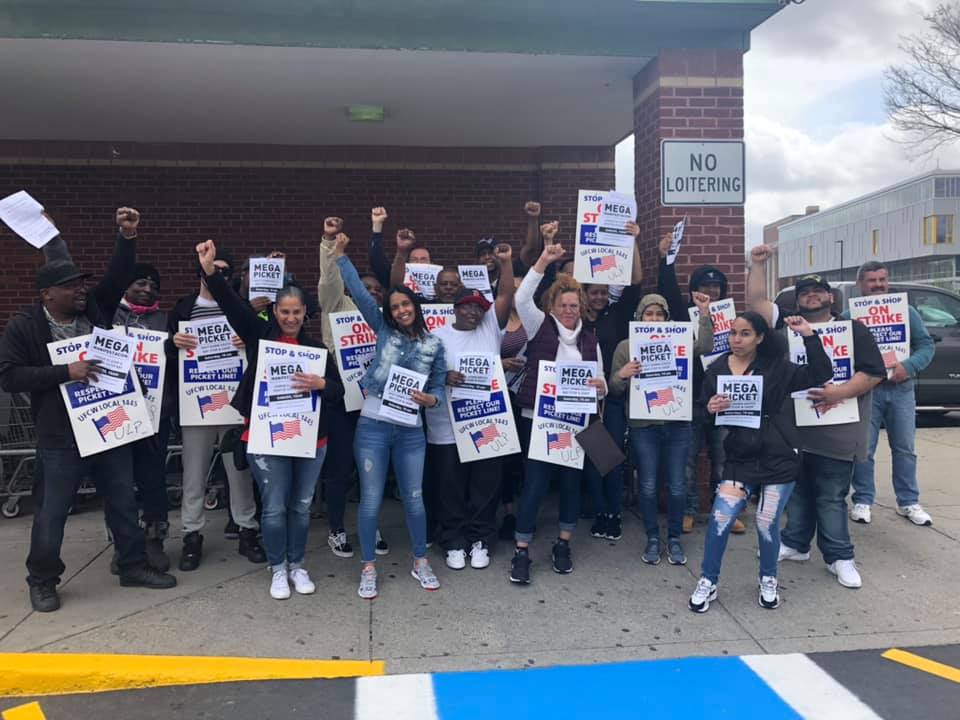
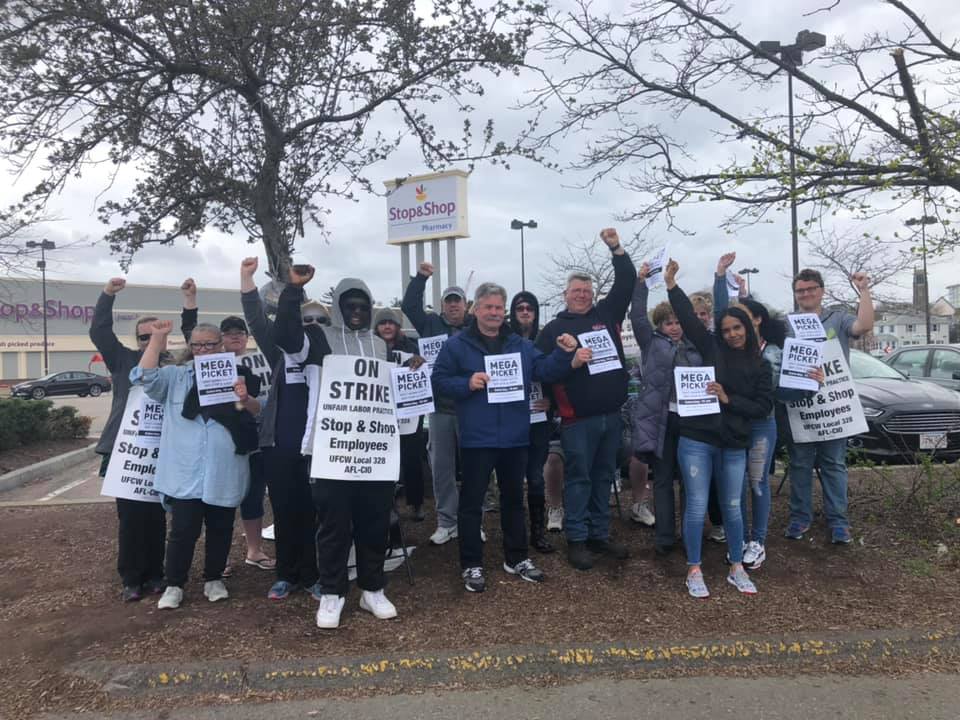
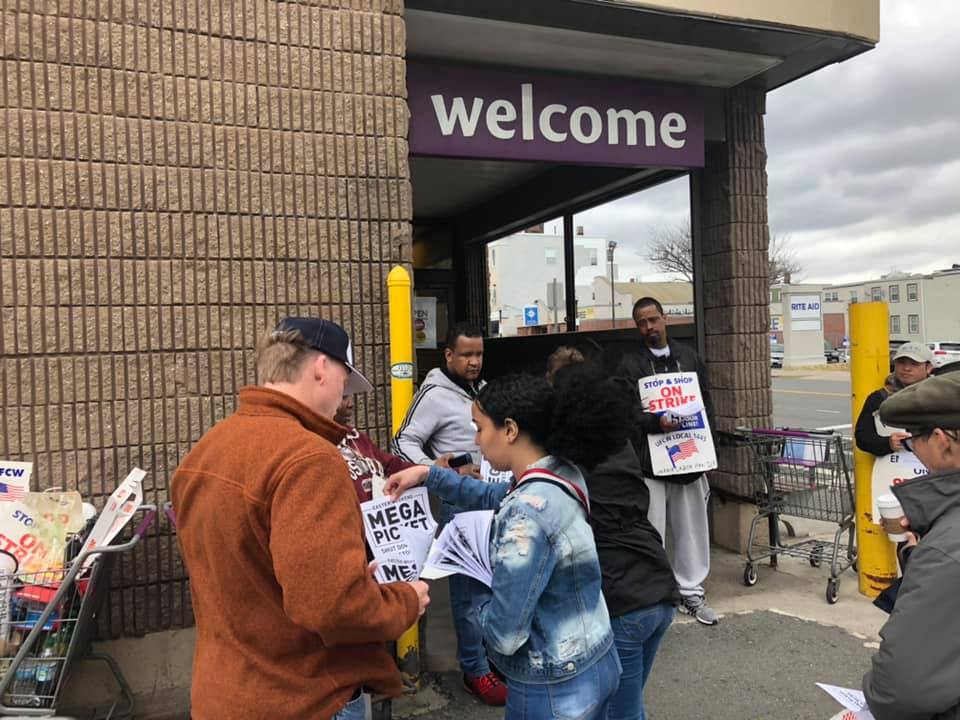
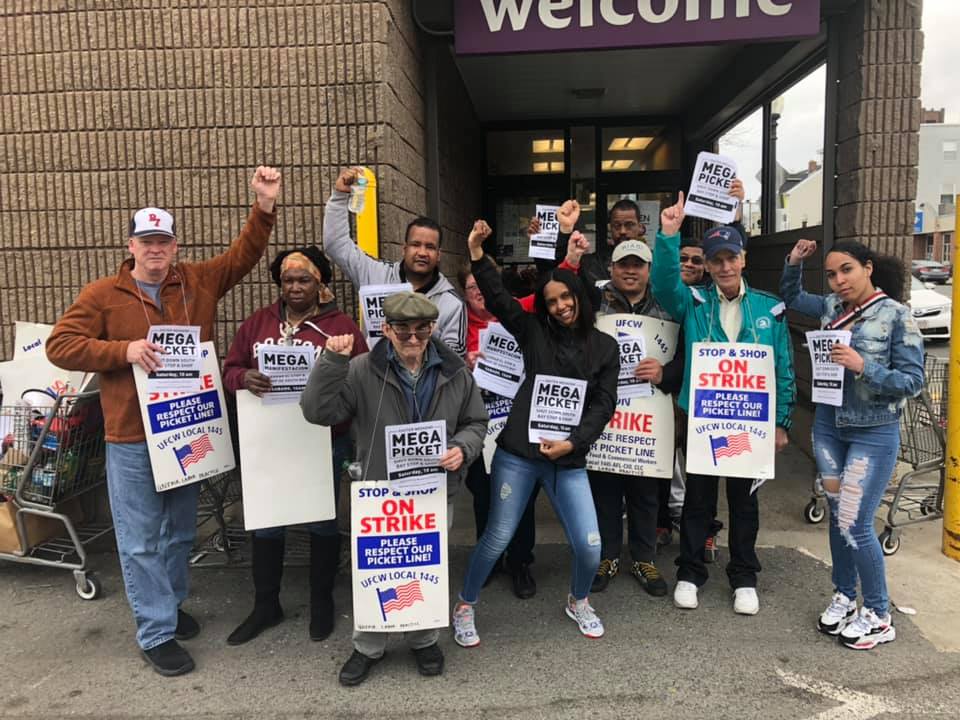
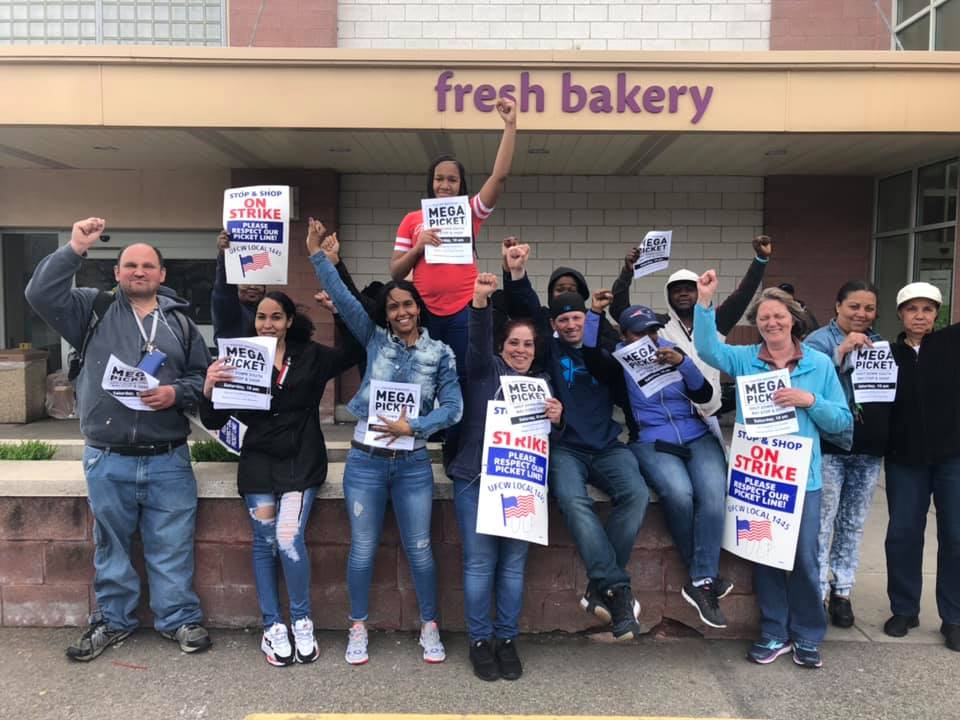
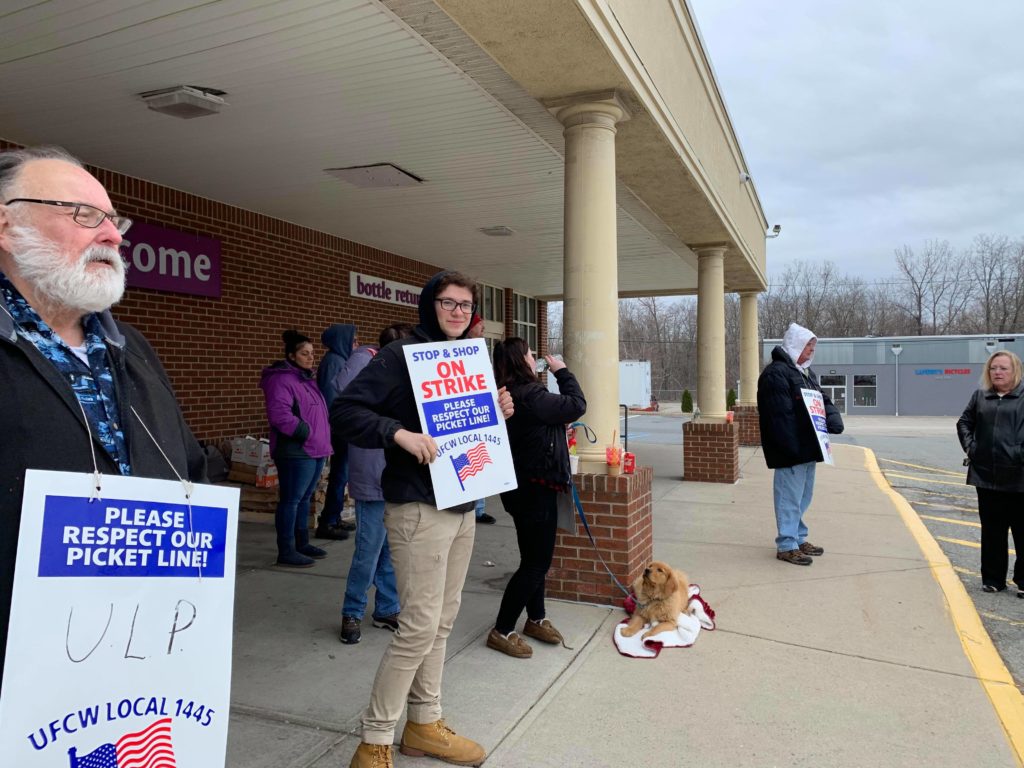
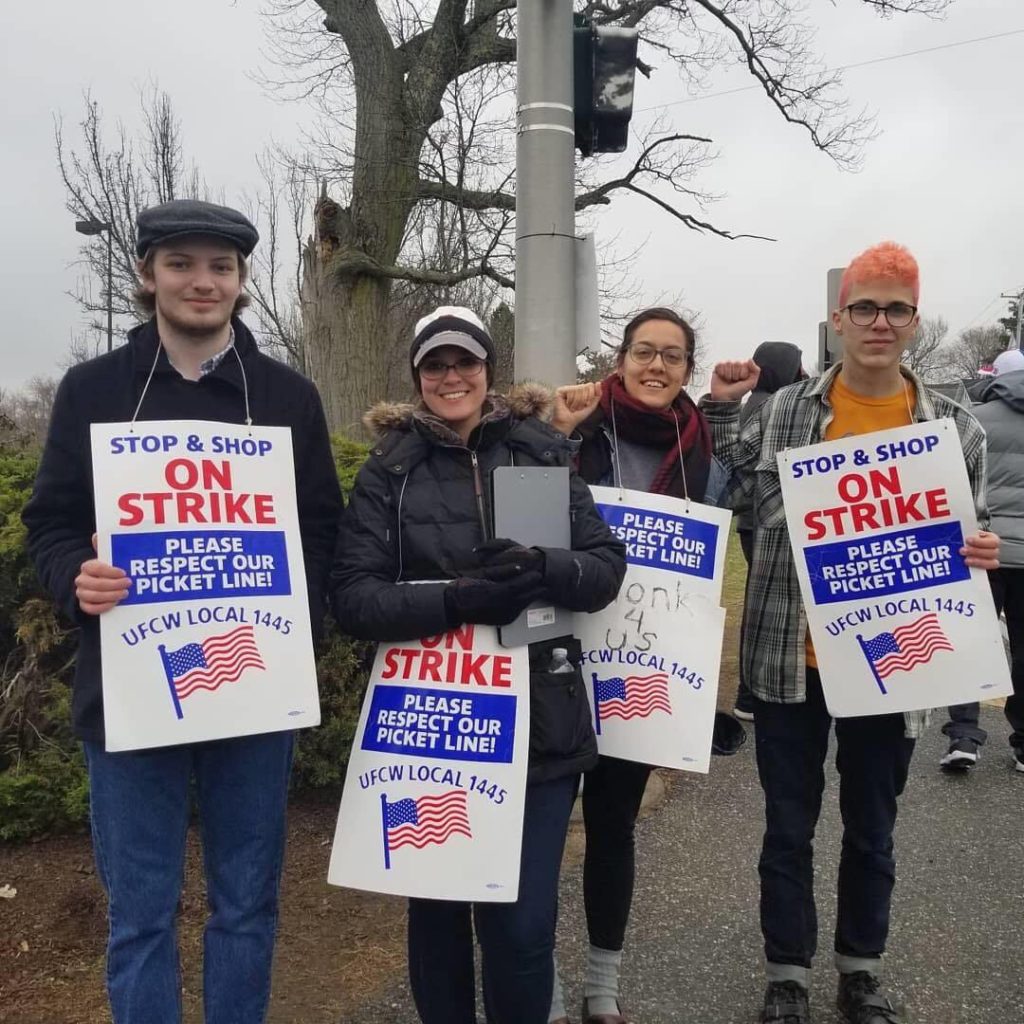
The Early Days of the Strike
The strike began at 1pm on Thursday, April 11 when workers got a text message beginning the strike and instructing them to walk out of work. Unfortunately, for some workers, this was the first time they had even heard of the contract dispute. Many workers wished that the union leadership had done more pre-strike organizing and preparation for the strike.
Initially, most workers expected for the strike to only last one or two days, three at most, but the strike lasted eleven days.
As soon as the strike started, the company decided to close many of the smaller stores and keep the larger ones open, although with limited service, using managers, scabs, and even prison work release labor. Given the different situation between closed and open stores as well as the differences between busy city-stores and less busy neighborhood or suburb stores, and pedestrian versus mostly car-oriented stores, picket lines looked different everywhere. But for most workers this was their first time going on strike – the last Stop & Shop strike was in 1988 and it lasted four hours – so a common theme everywhere was learning on the fly.
Building Effective Picket Lines and Stopping Delivery Trucks
Winning a strike requires shutting down a company’s production or the service they provide, in this case making and selling food and groceries. In the Stop & Shop strike this required: Strong picket lines that stopped customers from entering stores and delivery truck drivers from making deliveries, widespread customer and community support, and the active involvement of other unions and the wider labor movement.
Over the course of the eleven day strike the striking workers learned an enormous amount about strikes and the labor movement, not least how to organize an effective picket line. Workers learned that moving picket lines were much more effective at deterring customers than standing still. As well, respectfully talking to customers about what was at stake for Stop & Shop workers, what the company was trying to do, and politely but firmly asking them to shop somewhere else was shown to be effective. Creative chants that helped to keep up the energy on the picket lines were important too. Despite some people still rudely crossing the picket line, picket lines were overwhelmingly effective, with the company losing over $2 million each day.
Union truck drivers in the Teamsters pledged not to cross the picket line and make deliveries during the strike, but that didn’t stop the company from hiring non-union scab truck drivers who would. Convincing these truck drivers to not make their deliveries was a crucial part of making the company suffer. Learning by doing, workers realized that this took a two-pronged approach: physically blocking the truck from backing into the loading dock and actually talking to the truck driver and convincing them of why they should turn around.
On the second night of the strike, the first truck was turned around at the Jamaica Plain store in Boston, leading to an absolutely festive mood on the picket line. Afterward, picketers huddled to review how the delivery was stopped. The video of a Socialist Alternative member and union electrician explaining, with Spanish translation, how the truck was stopped spread to workers at many different stores.
In Worcester, when workers at the West Boylston St. store heard rumors of private security being hired to escort delivery trucks across the picket line, workers and members of Socialist Alternative organized the biggest picket in the city so far in the strike. Members of the International Brotherhood of Electrical Workers, Teamsters, United Auto Workers, ACLU, and other community supporters turned out. With a big, energetic picket line workers had overwhelming success turning cars around after convincing them to stop and talk.
Another important lesson learned throughout the strike was the way the police were used to defend the company’s interests, not those of the workers. This is not unique to the Stop & Shop strike but is true of all serious labor battles against the bosses.
The Brigham Circle Action and Coordination Across Stores
Unfortunately, the union leadership did not hold any meetings of rank-and-file workers during the strike, and there were no structures through which workers from different stores could communicate about effective tactics and coordinate to build for cross-store action. To help provide a space to do this, on the first Sunday of the strike Socialist Alternative helped organize a public meeting of rank-and-file Stop & Shop workers and community supporters in Boston titled, “Beat Stop & Shop: How Can We Win This Strike.”
Thirty Stop & Shop workers attended as well as twenty community supporters and members of other unions including the Massachusetts Nurses Association, Massachusetts Teachers Association, AFSCME, and the International Brotherhood of Electrical Workers. Workers at the meeting discussed what the most effective picket line tactics were as well as what was needed to win the strike, including escalation tactics such as rallies and bigger picket lines.
Following the meeting, the 50 workers and supporters marched one mile down a main street to a nearby Stop & Shop, marching through the store and out into the parking lot for a rally and big picket line. News of this spread far and wide across Greater Boston and became an example of what sort of action was necessary.
Out of this meeting and the Brigham Circle action, a committee was set up of workers from three different stores and Socialist Alternative members from other unions to plan for future coordinated action.
Mega Pickets
On the eighth day of the strike the union held a rally in Boston with soon-to-be presidential candidate Joe Biden. Many workers were happy to have Joe Biden’s support and knew it would get them good publicity and media attention, but many also had a healthy skepticism of Biden’s intentions and understood that he could not be relied on to win the strike for them. Joe Biden could get people out, but he couldn’t keep people out.
The above-mentioned cross-store committee decided to use the Biden rally, which drew over 2,000 people, to build further momentum and escalation for the strike. Workers passed out 1500 flyers building for an Easter weekend Mega Picket at the South Bay Stop & Shop with the goal of effectively shutting it down. South Bay is the second most profitable store in New England so workers knew this would have a huge effect on the company. Seeing this, workers at the Jamaica Plain store that night decided to build for their own Mega Picket to prevent the company’s attempt to open their store (which had been closed since the start of the strike) before Easter.
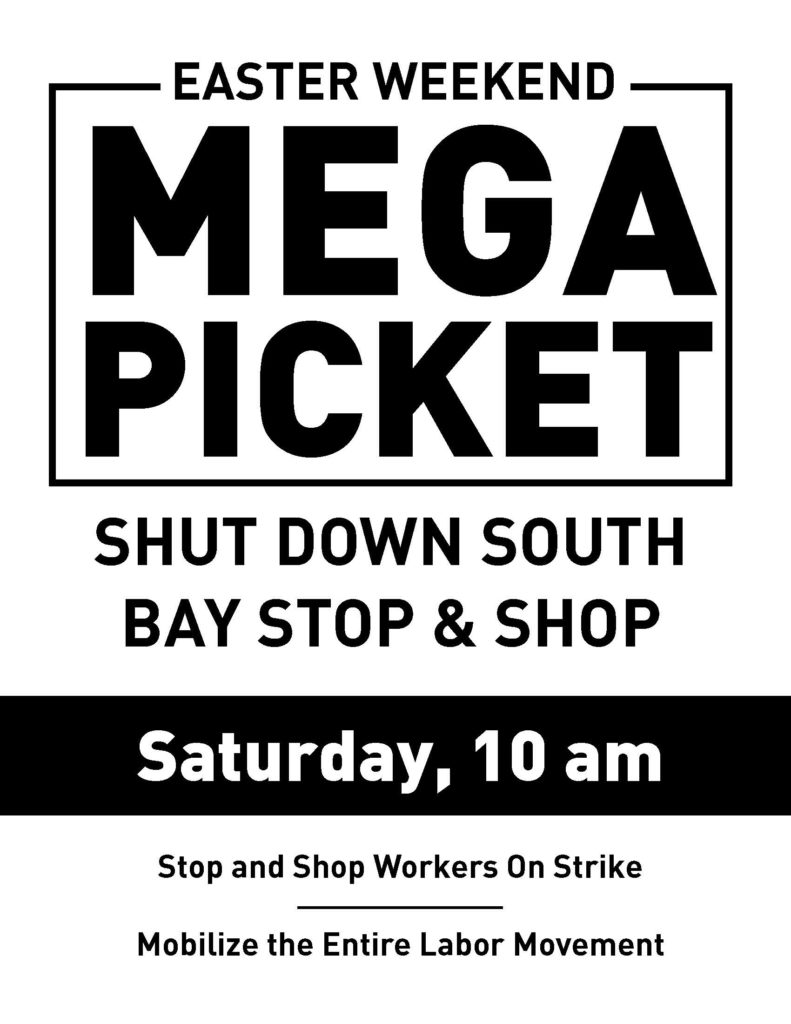
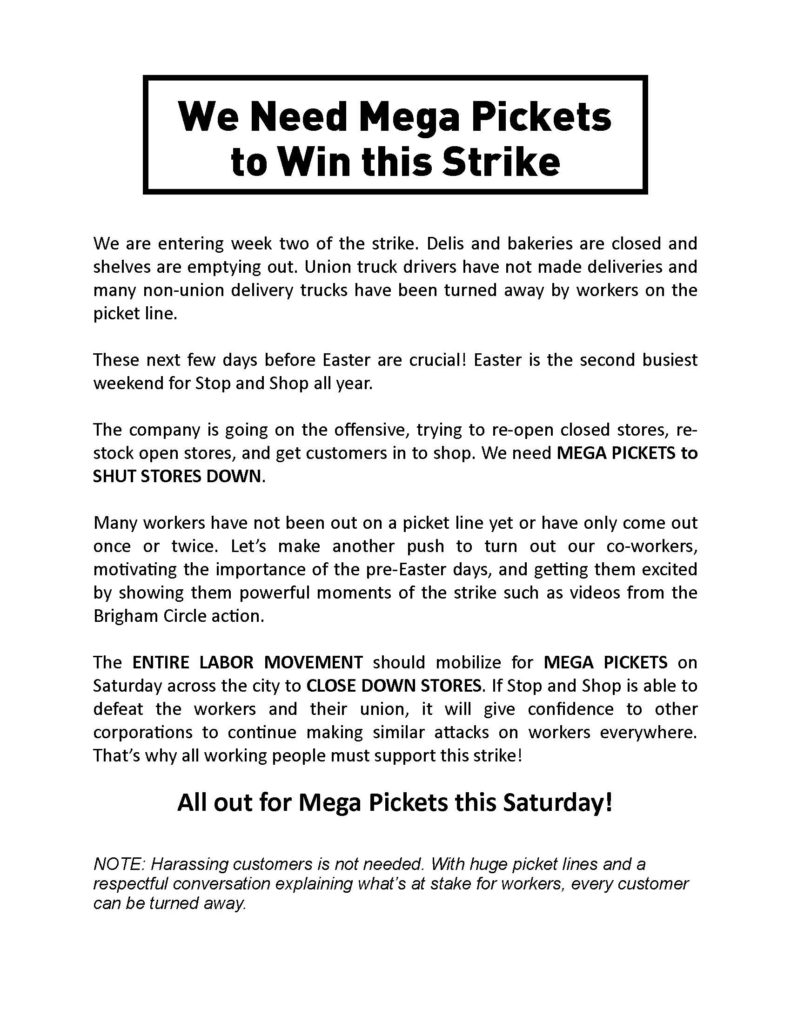
Friday (April 19), the one day in between the rally and the Mega Pickets, South Bay workers drove to stores across Greater Boston to build for the Mega Picket. In Jamaica Plain, workers handed out over 1,000 flyers at the local T (subway) station and along the neighborhood’s main street.
On Saturday, 250 workers and community supporters rallied in front of the Jamaica Plain store, preventing the store from opening. After workers gave speeches to the crowd (one in Spanish and one in English), they marched up and down the main street before sending reinforcements to the South Bay Mega Picket.
At South Bay, 150 workers, community supporters, and members of other unions from the teachers to nurses, and carpenters to ironworkers, gathered for a Mega Picket which spanned the entire front of the massive building covering both entrances to the store.
Stop & Shop management was absolutely furious at this. We found out the next day that the South Bay store made $30,000 that day. Normally the day before Easter they make between $300,000 and $400,000. These mega pickets, while only at two stores, pointed toward what was not only necessary to escalate the strike, but also entirely possible to achieve with cross-store organizing and coordination. If the union leadership had called for mega pickets at stores across the region, it could have motivated more workers to join the picket line, given a concrete way for the community and other unions to support the workers, and most importantly made it harder for the company to operate. An important lesson from this strike though is that even without the union leadership taking this sort of initiative, rank-and-file workers can still organize to take bold initiative themselves.
Tentative Agreement (TA)
The day after the mega pickets, on Easter night, the company and union leadership came to a tentative agreement. This was met with an enormous sense of relief by most Stop & Shop workers, who had gone over a week and a half without pay. Many workers were also extremely frustrated with how the union leadership was letting the process play out. Union leaders instructed workers to immediately stop picketing and report back to work the next morning, before a ratification vote had even taken place. They also refused to release the actual details of the tentative agreement!
This is very bad practice for a union leadership. A tentative agreement is just that; it is tentative. Pickets should never be lifted and workers should not return to work until the union membership votes to ratify the agreement. Doing this makes it much harder to go back on strike if needed, which puts enormous pressure on the membership to ratify the contract, even if really they don’t want to.
Instead, it would have been far better if the union leadership had announced a tentative agreement had been reached, immediately released the details, and allowed for a 24-hour period in which union members could come together to discuss and debate the details of the TA and then take a vote. During this time, pickets should have been kept up, and only if the TA was ratified should pickets have been called off and workers gone back to work. This process would be far better because it maintains pressure on the company until the strike is officially over.
The first ratification vote meeting was held by Local 1445 on Wednesday night and the last will be held by Local 328 on Monday night. Unfortunately, the union leadership is not even organizing actual ballot votes on the contract. There is just a call to “stand if you agree” and that’s it. Many workers report being confused about what was happening, leading some to stand even if they disagreed with the TA.
Workers are now debating the merits of the TA, and likely soon-to-be new contract, and whether the strike was worth it. Socialist Alternative believes that the strike was absolutely worth it. The new contract is better than what the company was offering before the strike, including stopping significant raises to healthcare costs and cutting time-and-a-half pay on Sundays and holidays for everybody. It does however cut time-and-a-half for part-timers, who are 80% of the company’s workforce, in their first three years. The company will use this to schedule new part-timers on Sundays and holidays as much as possible so as to avoid paying time-and-a-half as much as possible. The new contract does include wage raises, but they are minimal, and are not enough to keep up with the rapidly rising cost of living in the Northeast including housing, food, and education.
If the union leadership had better prepared workers for the strike, including setting up a public strike fund weeks earlier than they did, and used bolder tactics such as mega pickets and more rallies that included the broader public, it is very possible the strike could have won more in the same amount of time.
Two-tier contracts, which corporations everywhere are trying to impose, are part of the bosses’ divide-and-conquer agenda. Three years from now, in the next contract battle, Stop & Shop will try to pit the different tiers against one another in order to weaken the union’s ability to fightback. Stop & Shop workers should be clear on this, and begin now to take measures to strengthen the union, fight for increased democracy, and prepare for future fights. This will take rank-and-file workers who agree on the need to transform the union becoming more active and getting organized with each other across stores.
What’s Next
Through the experience of this strike, crucial lessons were learned. For starters, workers learned how to organize effective picket lines and the role of the police in defending the company’s interests during a strike. They saw the importance of a union but also began to ask what kind of strategy and leadership the union needs. The failure of the local union leadership to provide a bold lead and a clear strategy to win and the lack of democratic structures through which workers across stores could coordinate was a concrete barrier to the strike being stronger. The way the union leadership handled the end of the strike was a clear mistake as well.
Now that the strike is over, workers who agree on tactics that would have strengthened the strike and how things could be better in the union going forward should come together and discuss how they can build a more democratic and more fighting union.
A crucial measure that Socialist Alternative calls for in all unions is for all union officials to make the average wage of the workers they represent. Also, members should have the right to recall their union officials if they feel they are not doing their job. Going forward, there should be much more frequent visits to stores by union reps as well as monthly membership meetings where members can come together to discuss issues in their stores and organize collectively around them. This will put the union in an astronomically stronger position in three years, when this contract is up, and a fight over the new contract is posed.
Socialist Alternative is thrilled to have had the opportunity to fight alongside Stop & Shop workers across Massachusetts, Rhode Island, and Connecticut during this strike. We have learned an enormous amount from Stop & Shop workers and have come away with a renewed fighting spirit ourselves. We look forward to deepening our relationship with Stop & Shop workers as they continue to fight the astounding corporate greed of their company.
On top of fighting the greed of individual corporations, Socialist Alternative fights for a society free of all corporate greed and exploitation. We fight for a society where the economy is dictated not by profit but by human need, and where workers have the final say in how things are run, not managers and CEO’s. Stop & Shop workers and all workers who also want to fight for this kind of society should consider joining Socialist Alternative.


